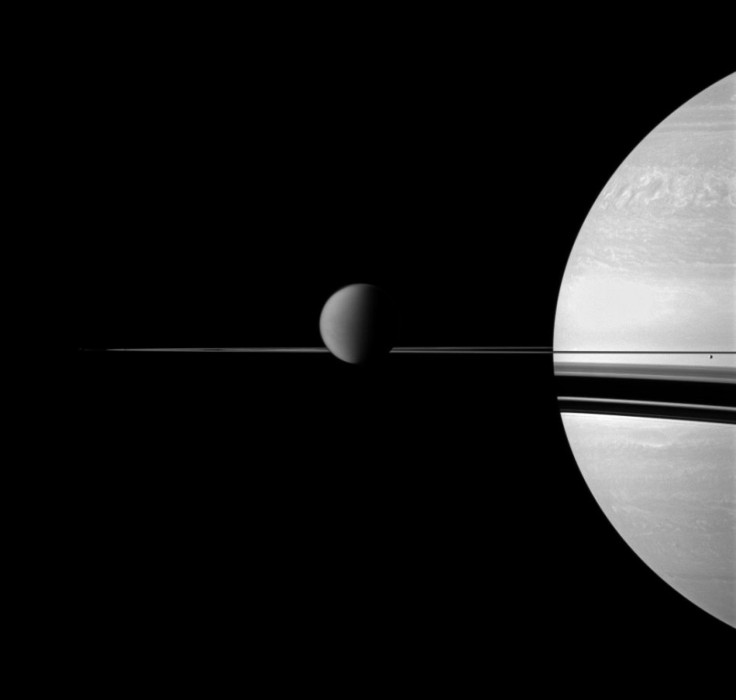Moon Enceladus Spews Water Vapor at Saturn

Rain from Saturn's moon has encapsulated the entire planet of Saturn in water vapor, according to observations released by the European Space Agency (ESA) on Tuesday, which finally pinpoints the water source in Saturn's upper atmosphere.
Enceladus, a satellite moon of Saturn, expels nearly 250 kg, or over 550 pounds, of water per second towards Saturn via a collection of jets from a distance of about four Saturn radii. The water fired at the planet creates a doughnut-shaped layer, or torus, of water vapor.
Although Saturn is known to have traces of gaseous water within its deep layers, this discovery marks a solution to the origin of Saturn's water source in its upper atmosphere. Also, Enceladus is the first and only moon in the Solar System known to impact the chemical composition of its parent planet, a breakthrough finding.
While the water vapor was reported back in 1997 through the usage of infrared wavelengths from ESA's Herschel space observatory, the source of the water vapor was unknown.
Analysis leader Paul Hartogh, Max-Planck-Institut für Sonnensystemforschung, Katlenburg-Lindau in Germany said, "There is no analogy to this behaviour on Earth. No significant quantities of water enter our atmosphere from space. This is unique to Saturn."
Majority of the water discharged from Enceladus is either lost in space, freezes on Saturian rings or strikes one of Saturn's other 62 known moons. Only a small fraction of the water, however, strikes Saturn to form the torum of water vapor found in the upper atmosphere of the planet. The water is then distributed to the lower level atmosphere of Saturn to condense.
The torus created by Enceladus, though large in size measuring up to 10 times the radius of Saturn, has escaped detection until now mainly because water vapor appears transparent in light.
"ESA's Infrared Space Observatory found the water vapour in Saturn's atmosphere. Then NASA/ESA's Cassini/Huygens mission found the jets of Enceladus," Göran Pilbratt, ESA Herschel Project Scientist, said. "Now, Herschel has shown how to fit all these observations together."
© Copyright IBTimes 2024. All rights reserved.






















